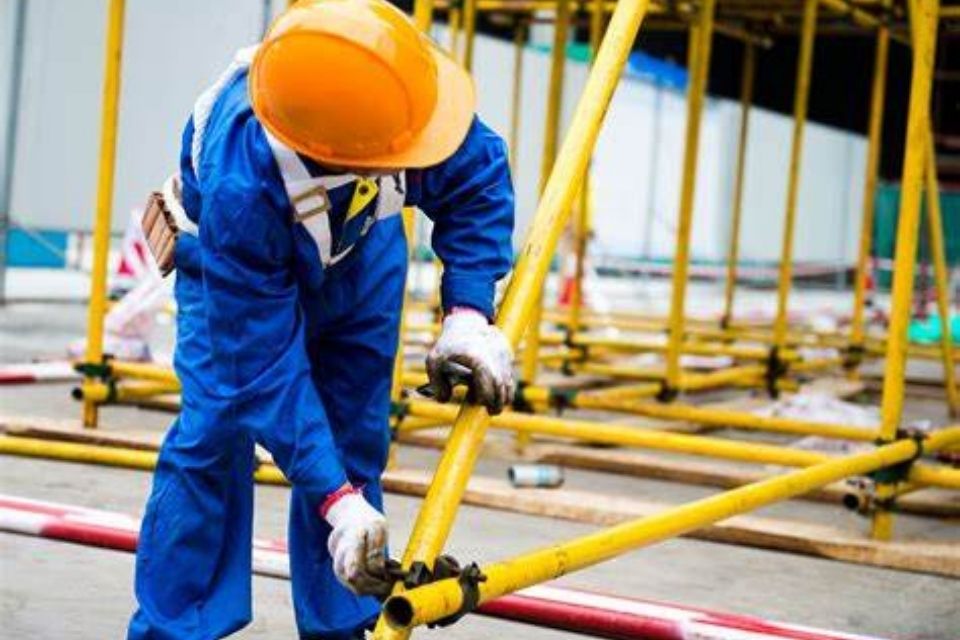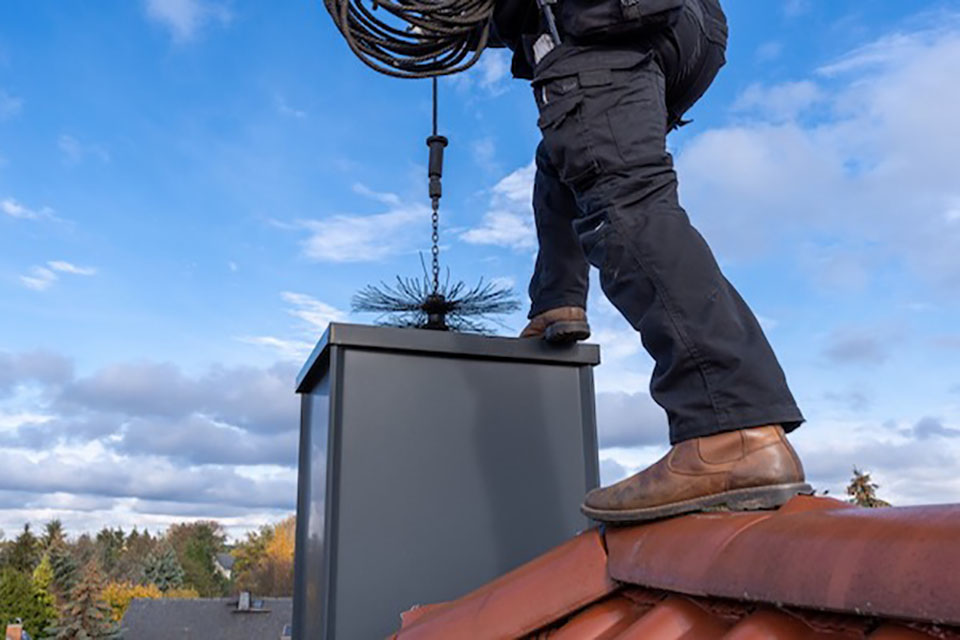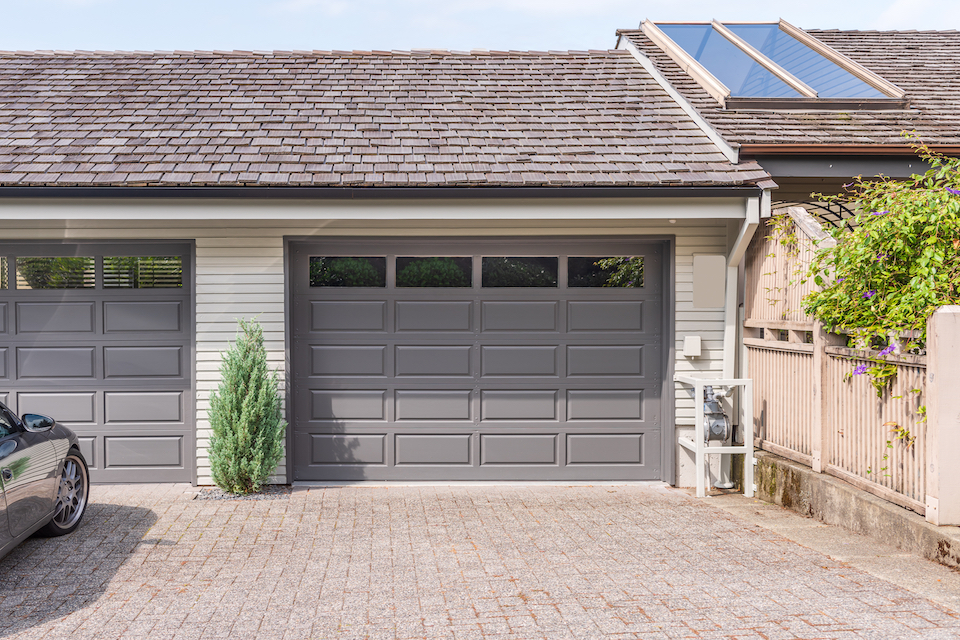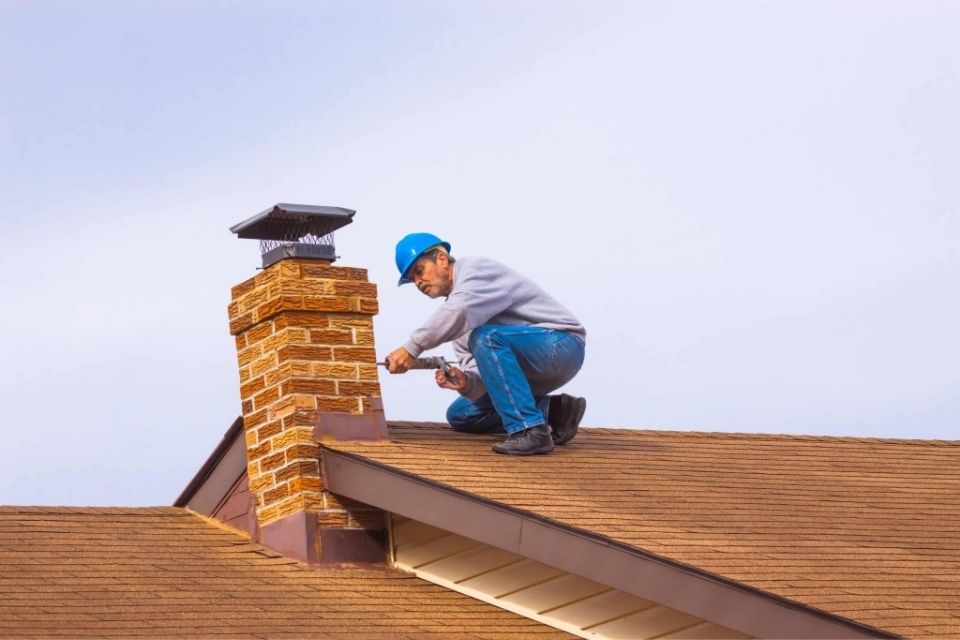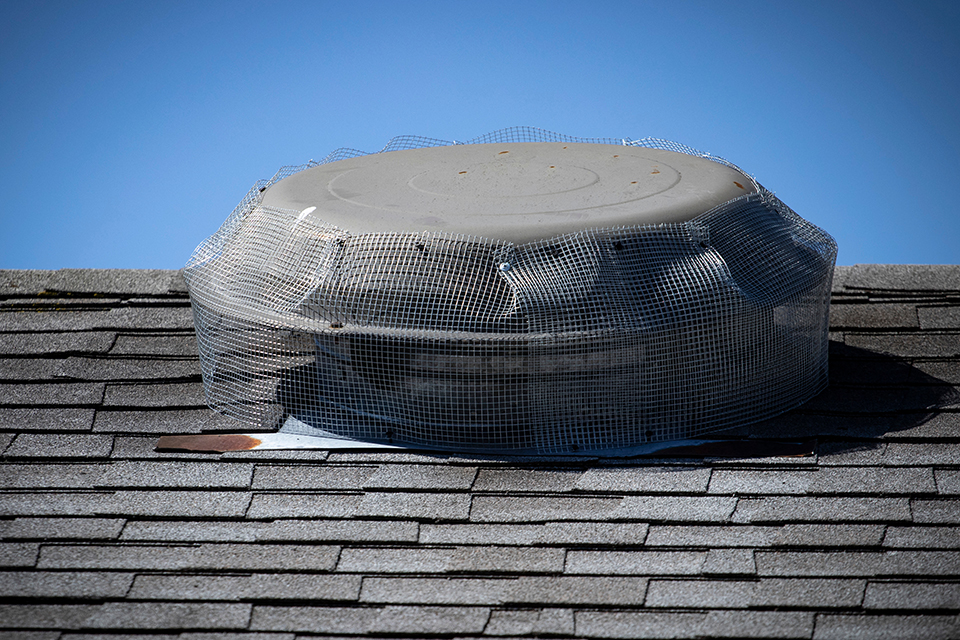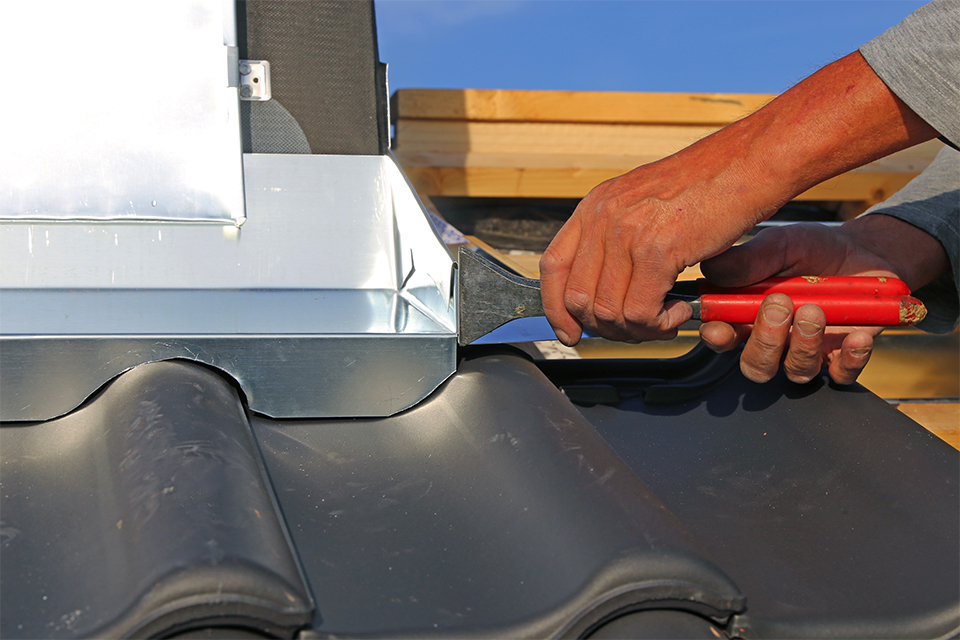How Much is Scaffolding Hire?
What's the average cost of hiring scaffolding?
The scaffold cost for roof gutter repair starts from £250 per week. The cost will land around £450 to £550 to scaffold a chimney, £800 to £1000 for scaffolding on 3 sides of a semi-detached house, or £600 to £700 for scaffolding on 3 sides of a detached bungalow.
You’ll need to budget for about £450 to £550 for scaffold bridging over a conservatory.
The type and size of the scaffolding that you hire will impact scaffolding hire prices the most.
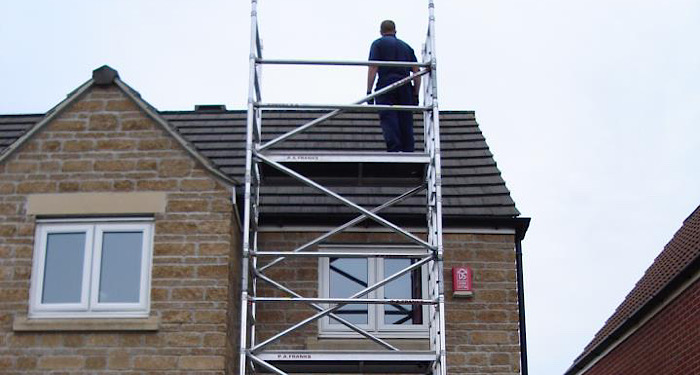
What can affect the overall cost of hiring scaffolding?
Among the cost-affecting factors for hiring scaffolding are the type and size of the scaffolding, the number of tradespeople hired, ease of access, and the location of your property. Scaffolding hire prices can vary significantly based on these factors, with different project scenarios requiring different budgets.
How can the location of your property change scaffolding prices?
If you live in the southeast of England (and London in particular), prices will be higher than the national average in most areas. However, the opposite is true in regions like the north of England, Scotland, and Northern Ireland.
Those located in the London area can expect to pay more for hiring scaffolding than those located in other parts of the UK.
Scaffolding Price List
In the table below, you'll find all the average costs for renting scaffolding:
| Job Description | Total Cost |
|---|---|
| Scaffold Tower | £200 to £300 |
| Scaffold a Chimney | £450 to £550 |
| Scaffolding on 3 sides of Semi-detached House | £800 to £1000 |
| Scaffolding on 3 sides of Detached Bungalow | £600 to £700 |
| Scaffold Bridging Over a Conservatory | £450 to £550 |
Scaffolding costs can vary significantly depending on the size and complexity of the project, with larger and more intricate projects leading to higher expenses.
Average Scaffolding Hire Costs
As we look ahead to 2025, the average cost of hiring scaffolding can vary significantly based on the project’s complexity and location. For a typical scaffolding structure, you can expect to pay anywhere from £200 to £1,000 or more per week.
For smaller, independent scaffolding structures, the average cost starts at around £250 per week. However, larger scaffolds, such as those required for high-rise buildings or more complex projects, can see costs soar to £10,000 or more.
When it comes to residential projects, the average cost of scaffolding hire for a semi-detached house ranges from £800 to £1,000 per week. For a detached bungalow, you might be looking at a weekly cost of £600 to £700. If you’re planning a conservatory or extension project, the scaffolding hire costs typically fall between £450 and £550 per week.
For smaller projects like gutter repair and maintenance, which usually require a less extensive scaffolding structure, the average costs range from £250 to £400 per week. Hiring qualified professionals for scaffolding services is crucial as it ensures safety standards are met and can impact the overall cost.
These figures provide a general idea of what you might expect to pay, but actual costs can vary based on specific project requirements and local market conditions.
What is Scaffolding Cost per m²?
It's possible to get an idea of scaffolding costs by looking at the costs per m². Here are some rough estimates:
| Type of scaffolding | Cost per week |
|---|---|
| Basic exterior | £15 - £25 per m² |
| Complex or multi-level | £25 - £40 per m² |
| Including roof access | £30 - £50 per m² |
What Affects Scaffolding Hire Costs?
Several factors can influence the cost of hiring scaffolding, making it essential to consider these elements when planning your project.
- Size and Complexity - Larger and more intricate scaffolding structures will naturally cost more.
- Type of Building - Period properties or those in conservation areas may need to plan scaffolding more carefully.
- Type of Refurbishment - Smaller projects for exterior wall painting will be easier than a full roof replacement.
- Time to Set Up - Projects that require more time to set up will incur higher labour costs.
- Hire Period - Longer hire periods typically result in higher costs.
- Location - Urban areas, especially cities like London, tend to have higher scaffolding hire costs compared to rural areas.
- Access - How difficult it is to get onto the property to erect the scaffolding will influence the price.
The availability of site photographs and the level of detail provided in the quotation request can impact the cost as well. Detailed information allows scaffolding companies to provide more accurate quotes. Similarly, the need for a site survey and the terms and conditions of the hire agreement can affect the overall cost.
By understanding these factors, you can better anticipate the costs of hiring scaffolding and plan your project accordingly.
What Home Improvements May Need Scaffolding Rental?
There is no piece of legislation that dictates scaffolding must be used on any project above ground-floor level. However, this is something you'll often hear explained as if it is an unshakeable rule.
All work at height needs to effectively weigh the risks against other factors, such as the practicality.
For example, scaffolding rental for cleaning guttering might be the absolute safest way to do the job, but hiring scaffolding for that when a ladder and risk management could mitigate any issues would be far too costly for such a simple project.
A contractor may prefer to use scaffolding if they suspect a project is going to be awkward or may put them at unacceptable risk.
Some home improvement projects will almost always require scaffolding rental, such as:
That's because these projects require prolonged and sometimes difficult work at height, with risks that can't be mitigated in other ways.
Ultimately, if a contractor believes they need scaffolding for the job, they are unlikely to go forward without it.
To check whether that belief is shared by other contractors, you should get multiple quotes.
Types of Scaffolding
There are several common types of scaffolding. This section will break down these examples and look at the pros & cons and average costs of these options.
Single Scaffolding Cost
This type of scaffold tends to be employed for bricklaying and comprises a single frame of standards positioned like an upside-down L.
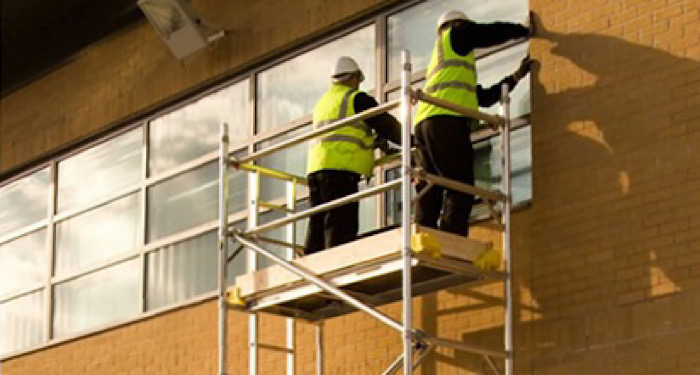
The support beams known as putlogs run through wall holes with scaffolding boards/planks going across to stand on. Reaching the adjoining wall is made easy for builders as a result.
The cost of hiring scaffold for this type will be about £90 to £130 in terms of supply costs.
Pros:
- Perfect for regular buildings
- Particularly safe choice
- Cheap scaffolding hire
- Can be assembled with relative ease
- Small and least number of scaffolding poles
Cons:
- Doesn’t well suit complex buildings
- Brickwork required
- Single scaffolding can only reach a given height
Double Scaffolding Cost
Also known as mason’s scaffolding, double scaffolding is generally used for stone masonry work. The idea behind using two rows of scaffolding is due to the challenges associated with fitting supporting plugs into stone.
With double scaffolding, the frame itself supports each putlog, and the use of two rows makes it especially firm. This type of scaffolding often uses cross braces and rakers too.
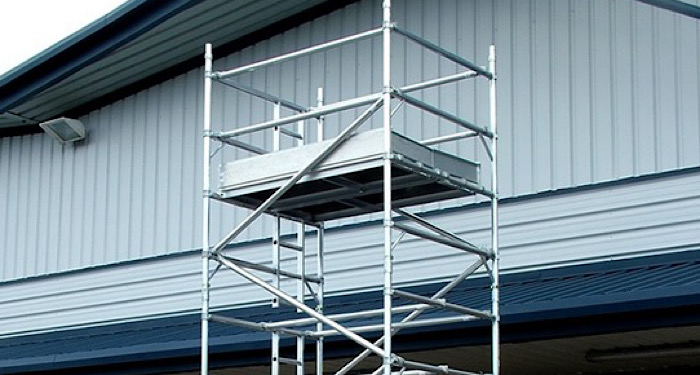
In most cases, double scaffolding is metallic and often steel-based. It will likely take several hours to set up and generally takes longer to erect than single scaffolding. This type of scaffolding is H-shaped by design.
Without the labour cost, it would land around £200 to £300.
Pros:
- More vigorous than single scaffolding
- Suited to stone masonry work
Cons:
- Dearer than hiring single scaffolding
Suspended Scaffolding Cost
This option, as the name suggests, is suspended at a height and held in position. It is held up by the roof building or another tall structure thanks to the attachment of chains or ropes.
This type of scaffolding platform, unlike other types, can be repositioned with ease. Suspended scaffolding tends to be used in cases where it’s impossible to build the scaffolding from the ground, perhaps due to accessibility issues.
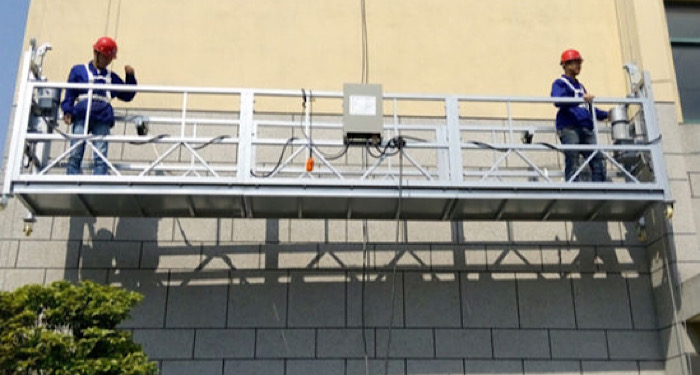
In other cases, suspended scaffolding will be used if work is needed at a certain height. For instance, window cleaning on skyscrapers is often achieved using this option.
It will likely take several hours to set up this type of scaffold. Suspended scaffolding generally costs several hundred pounds but could cost more for especially large-scale projects/work.
Pros:
- Suitable for working at heights
- Ideal if the ground below is not suited for establishing scaffolding
Cons:
- Difficult to assemble
- Can be expensive
Trestle Scaffolding Cost
Trestle scaffolding is usually metallic and is installed indoors. It can only be set up to about five metres in height. This type of scaffolding tends to consist of a frame fitted with mobile tripods or ladders and is generally used for interior repairs or decoration.
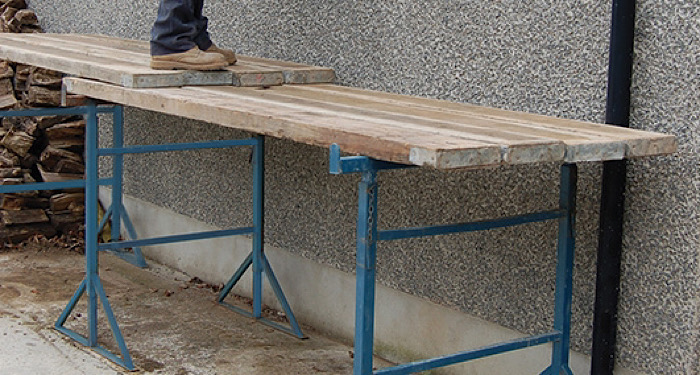
It tends to take sixty minutes or less to set up this type of scaffolding, although it will depend on the size.
Hiring costs may be as little as £10 to £20.
Pros:
- Not costly
- Ideal for indoor work
- Can easily be assembled
Cons:
- Narrow utility
Steel Scaffolding Cost
Scaffolding of various sizes and designs can be made from steel. Steel scaffolding tends to be comparable to double scaffolding, but what distinguishes it is that its stability and support are established with standards connected to steel couplers or fixings.
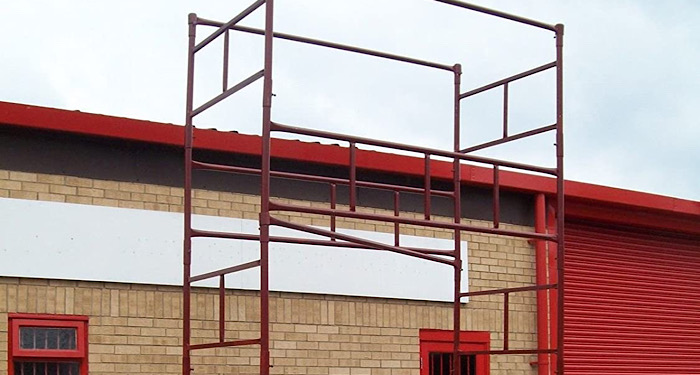
This option has great safety value and is particularly robust. For this reason, as well as the fact that it can be used in various projects, including construction sites, steel scaffolding is an especially popular choice.
Costs for hiring steel scaffolding may range from under £100 to £400+ as it can come in a wide range of sizes.
Pros:
- Particularly strong
- Well-suited to large construction projects
- Provides more safety
- Robust option
Cons:
- May prove a bit expensive
Cantilever Scaffolding Cost
With cantilever scaffolding, the standards tend to be held in place using a collection of needles that are brought up via wall holes. In other cases, the needles are fixed in position within the floors via a range of openings, making it a form of independent or double-frame scaffolding.
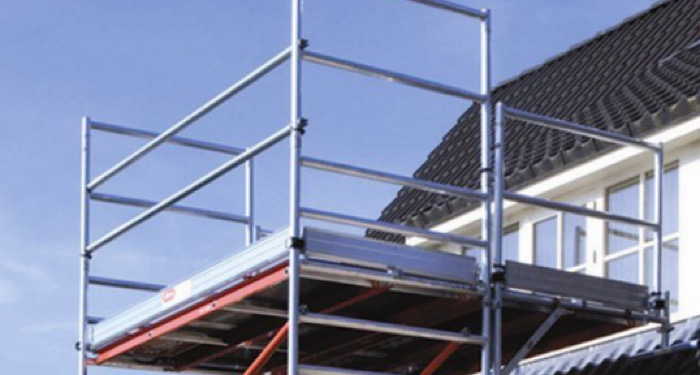
Cantilever scaffolding tends to be used in cases where the ground below is incapable of holding traditional scaffolding, the upper part of the wall is being constructed, or the ground is right beside a wall and is free of traffic.
Cantilever scaffolding is generally made of metal. The time needed to assemble this type of scaffolding will simply depend on the size of the project. This option tends to cost £50 to £100 to hire.
Pros:
- An ideal alternative to regular scaffolding
- Not usually too costly
Cons:
- Unsuitable for some situations
Patented Scaffolding Cost
Readymade or patented scaffolding generally features a premade frame and boards that have already been fixed into brackets at the height preferred.
This is a good option if you want to cut down on labour costs, given that their assembly is straightforward.
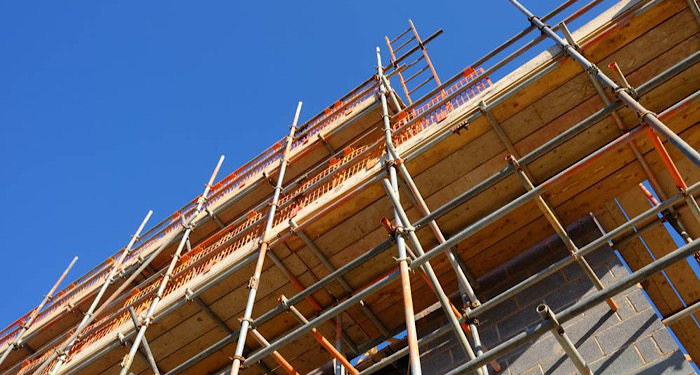
It will often cost several hundred pounds but may even find it’s possible to hire patented scaffolding for as little as £100 or less.
Costs for hiring steel scaffolding may range from under £100 to £400+ as it can come in a wide range of sizes.
Pros:
- Tends to be cheap
- Mostly pre-assembled
- Can reduce your labour expenses
Cons:
- Tends not to be of the best quality
Hiring vs Buying Scaffolding
The clear advantage of hiring scaffolding is that it’s simply a lot cheaper than buying it outright for any given project. In fact, it will generally cost several thousand pounds to buy to keep.
That said, it would actually save you money in the long run if you were planning to reuse the scaffolding enough times.
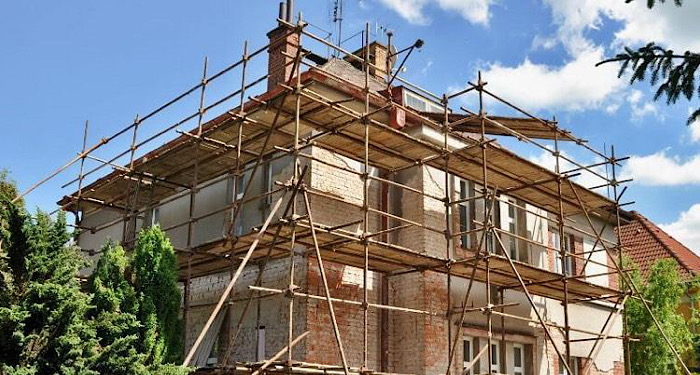
You’ll need to take this into account when trying to determine whether hiring or buying scaffolding is the best option for you.
Obviously, if you buy it, it will wear down with time, and it won’t be as strong or sturdy as renting scaffolding after a certain point.
FAQs
Q: How long can scaffolding be left up?
A: It depends on the project, but there are generally no restrictions on how long you can keep scaffolding up.
The local authorities may take issue if scaffolding is unsightly and it remains up for months on end. But in general, there are no issues so long as you are meeting all of your legal requirements (i.e. building regulations approval, etc.).
Q: What height should scaffolding be?
A: The height of scaffolding required will vary from project to project, but it ranges between 5 and 30 feet.
Q: When is scaffolding needed?
A: To access the roof or work at a height scaffolding is needed unless you are working with a ladder for a small space (e.g., replacing a few roof tiles in one roof space) or otherwise if you are working at a height of four feet above the ground.
Q: Can I get next day scaffolding?
A: It is possible, but it will depend on the company. To find out, you should quickly Google ‘scaffolding hire near me’ for local scaffolding hire and call a few local providers to check if you can get scaffolding for tomorrow. Unfortunately, there are no guarantees.
Q: Should scaffolding be checked?
A: Yes, check it for stability and safety either every seven days or otherwise when there has been adverse weather or alterations to the scaffolding itself.
Q: Does scaffolding hire include the cost of labour?
A: You'll usually find that the labour costs of erecting the scaffolding and later dismantling it are included within the overall quote. However, it's always good practice to check, especially if there are any terms and conditions about adverse weather delaying work.
Checklist for Selecting a Scaffolding Service
Choosing the right scaffolding service is crucial for the success and safety of your project. Here’s a checklist to help you select a reliable scaffolding company:
- Reputation: Check online reviews and ask for referrals to ensure the scaffolding company has a good reputation. Positive feedback from previous clients is a strong indicator of reliable service.
- Experience: Ensure the scaffolding company has experience in handling projects similar to yours. Experienced companies are more likely to provide efficient and safe scaffolding solutions.
- Safety Record: Check the company’s safety record and ensure they comply with all relevant regulations. A good safety record indicates that the company prioritises the well-being of its workers and clients.
- Certification: Ensure the scaffolding company is certified and compliant with all relevant regulations. Certification is a mark of professionalism and adherence to industry standards.
- Insurance: Check if the company has public liability insurance to cover any damages or injuries. This is crucial for protecting yourself from potential liabilities.
- Free Quote and Consultation: Get a free quote and consultation from the scaffolding company to ensure you understand their services and costs. This will help you make an informed decision and avoid unexpected expenses.
Licences and Regulations for Scaffolding
When planning to hire scaffolding, it’s essential to be aware of the various regulations and permits required to ensure compliance and safety:
- Health and Safety Executive (HSE) Directives: The HSE imposes directives related to working at heights, which scaffolding activities fall under. These regulations are designed to minimise risks and ensure the safety of workers.
- Working at Heights Regulations: Scaffolding activities must comply with working at heights regulations. This includes minimising the time spent on scaffolds and evaluating the risks associated with working on scaffolds.
- Licence: Ensure you obtain the necessary permits from the local council before erecting scaffolding. Failure to do so can result in significant penalties and project delays.
- Construction (Design and Management) Regulations 2015: Ensure the scaffolding company complies with all relevant regulations, including the Construction (Design and Management) Regulations 2015. Non-compliance can lead to severe penalties and jeopardise the safety of the project.
By adhering to these regulations and obtaining the necessary permits, you can ensure that your scaffolding project is safe, compliant, and successful.

